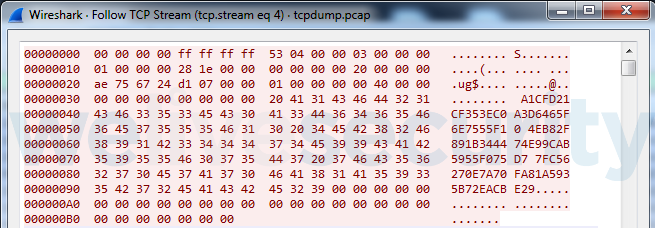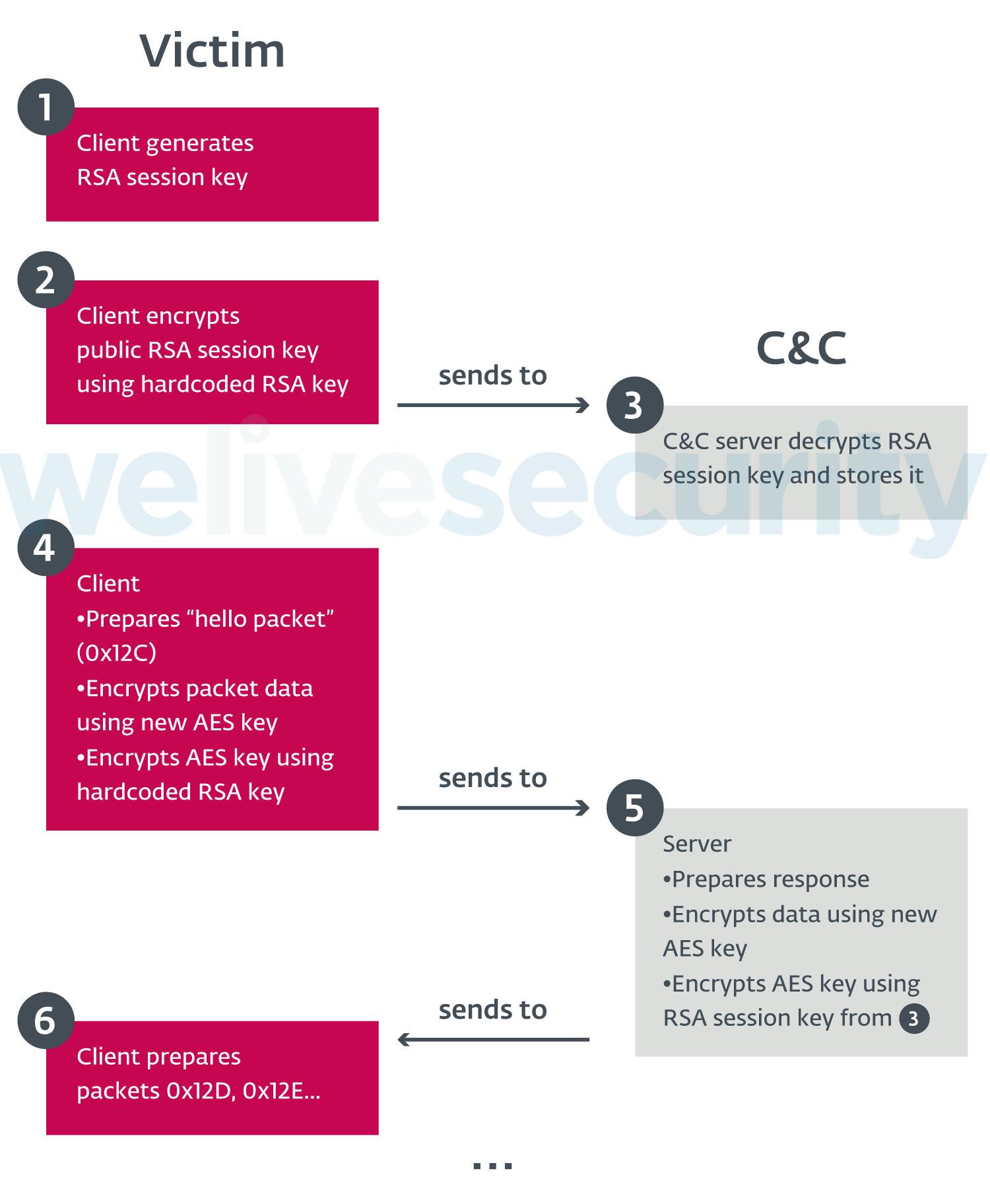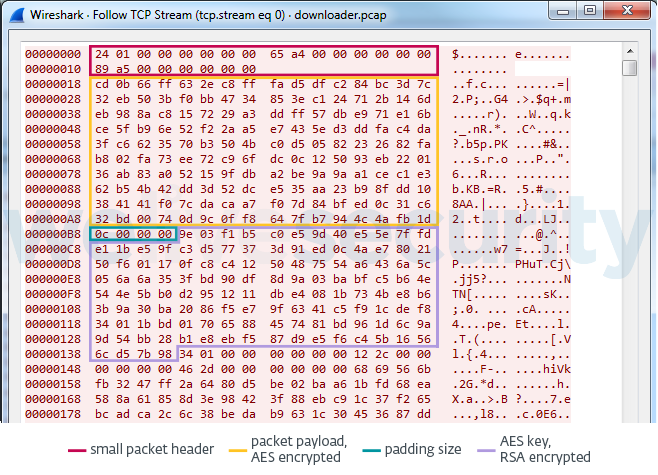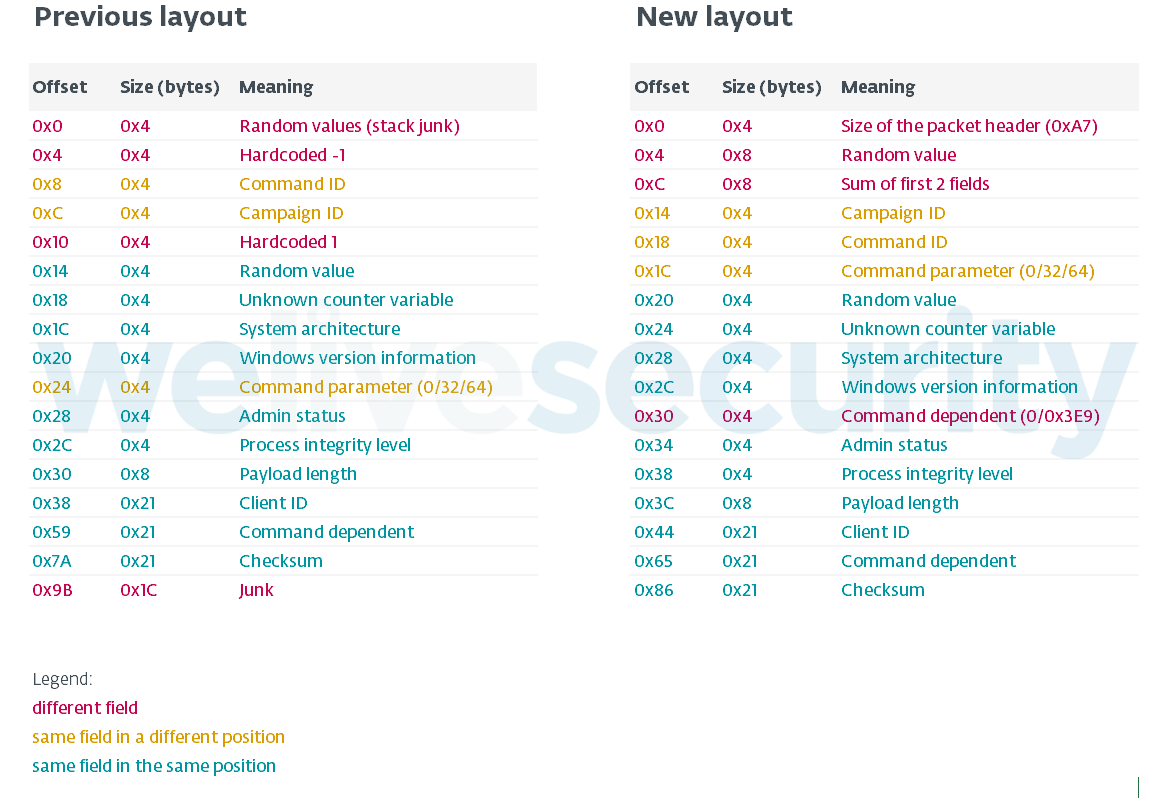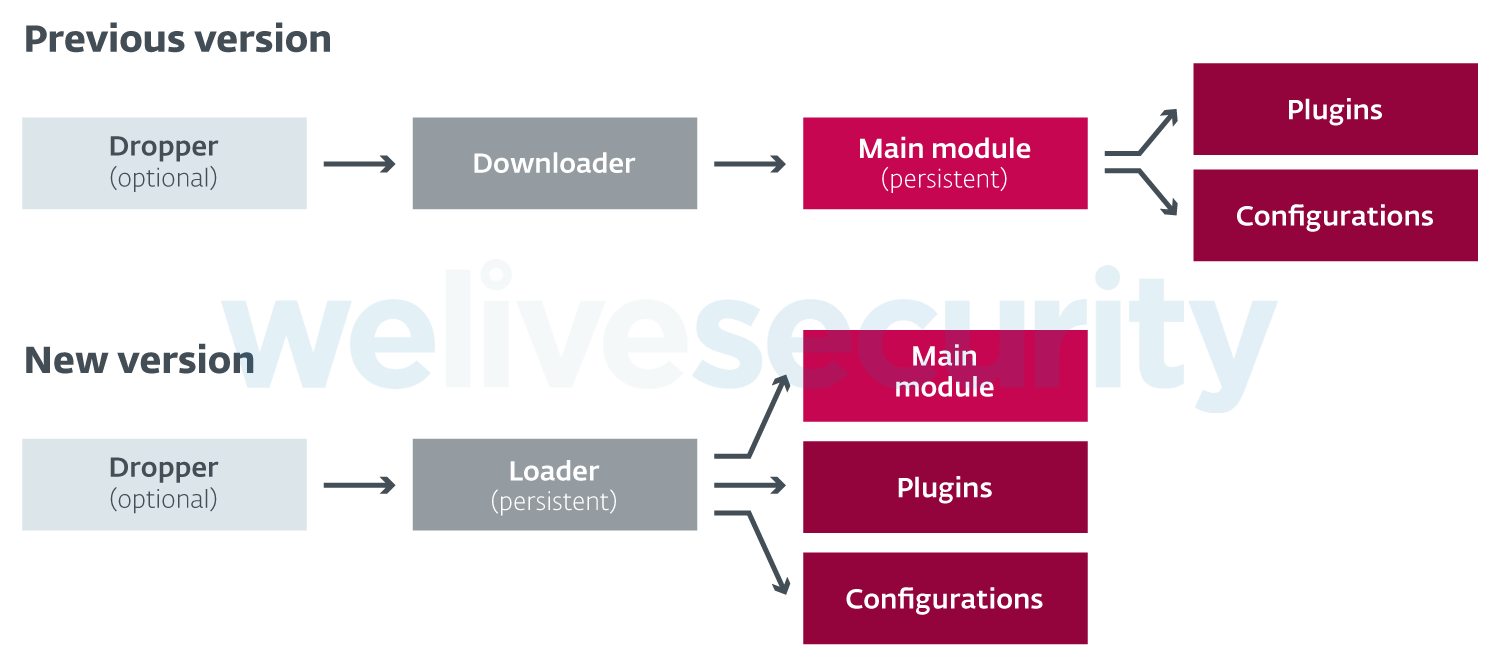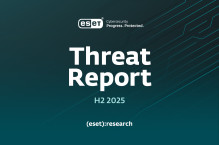The fast-evolving, modular Trojan DanaBot has undergone further changes, with the latest version featuring an entirely new communication protocol. The protocol, introduced to DanaBot at the end of January 2019, adds several layers of encryption to DanaBot’s C&C communication.
Besides the changes in communication, DanaBot’s architecture and campaign IDs have also been modified.
The evolution of DanaBot
After being discovered in May 2018 as part of Australia-targeted spam campaigns, DanaBot has had an eventful time since, appearing in malspam campaigns in Poland, Italy, Germany, Austria and Ukraine, as well as in the United States. The European campaigns have seen the Trojan expanding its capabilities with new plugins and spam-sending features.
In ESET telemetry on January 25, 2019, we noticed unusual DanaBot-related executables. Upon further inspection, these binaries were, indeed, revealed to be DanaBot variants, but using a different communication protocol to communicate with the C&C server. Starting January 26, 2019, DanaBot operators stopped building binaries with the old protocol.
At the time of writing, the new version is being distributed under two scenarios:
- As “updates” delivered to existing DanaBot victims
- Via malspam in Poland
The new communication protocol
In the communication protocol used before January 25, packets were not encrypted in any way, as seen in Figure 1.
Following the latest changes, DanaBot uses the AES and RSA encryption algorithms in its C&C communication. The new communication protocol is complicated, with several encryption layers being used, as seen in Figure 2.
These changes break existing network-based signatures and make it more difficult to write new rules for Intrusion Detection and Prevention Systems. Also, without access to the corresponding RSA keys, it is impossible to decode sent or received packets; thus PCAP files from cloud-based analysis systems (such as ANY.RUN) become unusable for researchers.
Each packet sent by the client has a 24 (0x18)-byte header:
| Offset | Size (bytes) | Meaning |
|---|---|---|
| 0x0 | 0x8 | Size of the data after this header |
| 0x8 | 0x8 | Random value |
| 0x10 | 0x8 | Sum of first two fields |
For each packet, the header is followed by AES-encrypted packet data, then a 4-byte value indicating AES padding size, and finally the RSA-encrypted AES key. Each packet is encrypted with a different AES key.
Server responses use the same format. Unlike in previous versions, packet data in server responses does not follow any specific layout (with some exceptions).
Packet data layout
Former packet data layout was detailed by Proofpoint in October 2018. In the latest version of DanaBot, the layout is slightly modified, as seen in Figure 4.
Changes in DanaBot architecture
Besides the changed communication protocol, DanaBot has also undergone some changes in architecture. The previous versions of DanaBot included a component that downloaded and executed the main module. The main module then downloaded and executed plugins and configurations.
The latest version shifts both these responsibilities to a new loader component, which is used to download all plugins along with the main module. Persistence is achieved by registering the loader component as a service.
Commands
According to our analysis, the loader component uses the following commands:
- 0x12C - Hello. First command sent by client to server
- 0x12D - Download 32/64-bit launcher component
- 0x12E - Request list of plugins and configuration files
- 0x12F - Download plugin/configuration files
Downloaded plugins and configuration files are encrypted using an AES key derived from the Client ID. In addition to that, plugins are compressed in ZIP format using LZMA compression, whereas configuration files are compressed using zlib.
Commands with ID numbers 0x130 - 0x134 are sent by the main module:
- 0x130 - Upload collected information to C&C server (e.g., screenshot of a victim’s computer; system information)
- 0x131 - Upload collected information to C&C server (e.g., list of files on the victim’s hard disk)
- 0x132 - Ask C&C server for further commands; there are around 30 available commands typical of backdoors, including launching plugins, gathering detailed system information and modifying files on client system
- 0x133 – Update C&C server list via Tor proxy
- 0x134 - Exact purpose unknown; most likely used for communication between plugins and C&C
Changes in campaign IDs
Previous research has suggested that DanaBot is distributed under various “affiliate” or “campaign” IDs.
In the previous version of DanaBot, almost 20 different campaign IDs were used. In the latest version, campaign IDs have changed slightly. As of February 5, 2019, we are seeing the following IDs in the wild:
- ID=2 appears to be a test version, serving a limited number of configuration files and no webinjects
- ID=3 is being actively spread, targeting users in both Poland and Italy, serving all configuration files and webinjects for both Polish and Italian targets
- ID=5 serves configuration files for Australian targets
- ID=7 is being spread only in Poland, serving webinjects for Polish targets
- ID=9 appears to be another test version, with limited spread and no specific targeting, serving a limited number of configuration files and no webinjects
Conclusion
In 2018, we observed DanaBot expanding in both distribution and functionality. The beginning of 2019 has seen the Trojan undergo “internal” changes, indicating active development by its authors. The latest updates suggest the authors are making an effort to evade detection at the network level, and possibly paying attention to published research and making changes to stay ahead of defenders.
ESET systems detect and block all DanaBot components and plugins under detection names listed in the IoCs section.
This research was carried out by Kaspars Osis, Tomáš Procházka and Michal Kolář.
Indicators of Compromise (IoCs)
C&C servers used by the new version of DanaBot
- 84.54.37[.]102
- 89.144.25[.]243
- 89.144.25[.]104
- 178.209.51[.]211
- 185.92.222[.]238
- 192.71.249[.]51
Webinject and redirect servers
- 47.74.249[.]106
- 95.179.227[.]160
- 185.158.249[.]144
Example hashes
Note that since new builds of DanaBot’s components are released regularly, we provide just a sampling of hashes.
| Component | SHA-1 | ESET detection name |
|---|---|---|
| Dropper | 98C70361EA611BA33EE3A79816A88B2500ED7844 | Win32/TrojanDropper.Danabot.O |
| Loader (x86), campaign ID=3 | 0DF17562844B7A0A0170C9830921C3442D59C73C | Win32/Spy.Danabot.L |
| Loader (x64), campaign ID=3 | B816E90E9B71C85539EA3BB897E4F234A0422F85 | Win64/Spy.Danabot.G |
| Loader (x86), campaign ID=9 | 5F085B19657D2511A89F3172B7887CE29FC70792 | Win32/Spy.Danabot.I |
| Loader (x64), campaign ID=9 | 4075375A08273E65C223116ECD2CEF903BA97B1E | Win64/Spy.Danabot.F |
| Main module (x86) | 28139782562B0E4CAB7F7885ECA75DFCA5E1D570 | Win32/Spy.Danabot.K |
| Main module (x64) | B1FF7285B49F36FE8D65E7B896FCCDB1618EAA4B | Win64/Spy.Danabot.C |
Plugins
| Plugin | SHA-1 | ESET detection name |
|---|---|---|
| RDPWrap | 890B5473B419057F89802E0B6DA011B315F3EF94 | Win32/Spy.Danabot.H |
| Stealer (x86) | E50A03D12DDAC6EA626718286650B9BB858B2E69 | Win32/Spy.Danabot.C |
| Stealer (x64) | 9B0EC454401023DF6D3D4903735301BA669AADD1 | Win64/Spy.Danabot.E |
| Sniffer | DBFD8553C66275694FC4B32F9DF16ADEA74145E6 | Win32/Spy.Danabot.B |
| VNC | E0880DCFCB1724790DFEB7DFE01A5D54B33D80B6 | Win32/Spy.Danabot.D |
| TOR | 73A5B0BEE8C9FB4703A206608ED277A06AA1E384 | Win32/Spy.Danabot.G |


